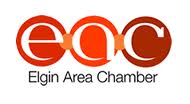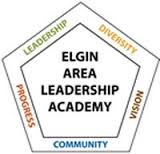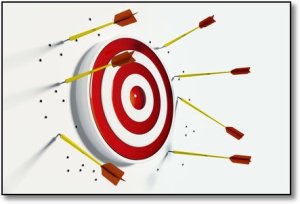 “I laughed at the Lorax, “You poor stupid guy!
“I laughed at the Lorax, “You poor stupid guy!
You never can tell what some people will buy!”
Business is business!
And business must grow
regardless of crummies in tummies, you know.
— Written my Dr. Seuss in The Lorax
You hear it all the time from for-profit business people, “If you’re not growing, then you’re dying.” If you want proof that this is the mantra of the business community, turn on the news or open your newspaper. Oh heck, just Google it and you’ll find more than you can read.
However, isn’t this also the mantra of the non-profit community? In my almost 20 years of experience, it certainly seems to be. The following are just a few things I constantly hear my non-profit clients saying:
- “Our facility is too small (or too old), and we need to raise money to build a new one to serve more people.”
- “The state just released a new grant RFP, and we should look at expanding programming if we hope to qualify.“
- “We don’t have enough board volunteers and need to add more.“
- “Operating expenses keep rising and we need to add another fundraising campaign or event.“
 So, I guess Dr. Seuss is right again . . . “Business is business!” It must just be a function of human nature, right? Because I see corporate America constantly expanding. I see the non-profit sector doing the same thing. And I may just get sick if I hear one more person rant about the expanding size of government on my television (I probably just need to learn how to use my remote and change the channel.)
So, I guess Dr. Seuss is right again . . . “Business is business!” It must just be a function of human nature, right? Because I see corporate America constantly expanding. I see the non-profit sector doing the same thing. And I may just get sick if I hear one more person rant about the expanding size of government on my television (I probably just need to learn how to use my remote and change the channel.)
There is lots and lots of wisdom in Dr. Seuss’ words and there are lots of directions I could go with my blog post this morning, but it is his last sentence that sticks with me.
I don’t know about you, but I believe “crummies in tummies” is an obvious reference to:
- stress
- anxiety
- uncertainty
I think he is saying the idea of growth is a force at work at all times in our organizations, and it is likely a stressor. While I believe this to be true, I’m choosing to look at this as a clarion call rather than a truism. I think the good doctor is making the case for . . .
PLANNING
In my experience, non-profit organizations who plan for growth don’t have many “crummies in tummies.” And I’m not just talking about developing one plan . . . those organizations have many plans including:
- Strategic plan
- Long term plan
- Business plan
- Resource development plan
- Board Development plan
- Compensation & Benefits Plan
- Program plan
- Marketing plan
- Crisis communications plan
- Succession plan
 I know that many people look at this list and immediately reject it, but if Dr. Seuss is right and “Business is business! And business must grow” then change is inevitable inside of our organizations. And if change is inevitable, then why put on a blindfold and take the proverbal steering wheel of your organization?
I know that many people look at this list and immediately reject it, but if Dr. Seuss is right and “Business is business! And business must grow” then change is inevitable inside of our organizations. And if change is inevitable, then why put on a blindfold and take the proverbal steering wheel of your organization?
If this post intrigued you but you’re not sure how or where to start, you might want to check out a few of these resources I recently found online:
- SCORE: “Business Planning Tools for Non-Profit Organizations — Second Edition“
- The Bridgespan Group: “Sample Nonprofit Business Plans“
- National Council of Nonprofits: “Strategic and Business Planning for Nonprofits“
Of course, if you are looking for an external consultant and partner to help your agency with facilitating you plan, I know of someone who might be willing to help. 😉
I am feeling whimsical this morning. So, please scroll down and use the comment box below to share what this Dr. Seuss quote inspired you to think about this morning. Your thoughts and experiences are appreciated and will likely help inspire other non-profit professionals and volunteers reading this blog.
Here’s to your health!
Erik Anderson
Founder & President, The Healthy Non-Profit LLC
www.thehealthynonprofit.com
erik@thehealthynonprofit.com
http://twitter.com/#!/eanderson847
http://www.facebook.com/eanderson847
http://www.linkedin.com/in/erikanderson847

 Exercise: What seat(s) on the bus do you want to sit?
Exercise: What seat(s) on the bus do you want to sit? Tool: The Matrix Map
Tool: The Matrix Map
 Every good planning process begins with some form of evaluation. It could look like a SWOT analysis. It could be significantly more intensive and involve going through an accreditation process. Regardless of what evaluation process you use, good planning starts with evaluation because it is difficult to figure out where you want to go if you don’t know where you are currently.
Every good planning process begins with some form of evaluation. It could look like a SWOT analysis. It could be significantly more intensive and involve going through an accreditation process. Regardless of what evaluation process you use, good planning starts with evaluation because it is difficult to figure out where you want to go if you don’t know where you are currently.
 I always joke that I went to the School of Worst Case Scenarios, because when presented with any decision, I try to figure out the worst thing that could happen. It amuses my clients, yet it’s a helpful exercise. Once you know the worst case, you can roll of the dice, create a plan to avoid it or decide it’s not worth it.
I always joke that I went to the School of Worst Case Scenarios, because when presented with any decision, I try to figure out the worst thing that could happen. It amuses my clients, yet it’s a helpful exercise. Once you know the worst case, you can roll of the dice, create a plan to avoid it or decide it’s not worth it.



 “Ah, but a man’s reach should exceed his grasp, else what’s a heaven for?”
“Ah, but a man’s reach should exceed his grasp, else what’s a heaven for?” Now you might be thinking how in the world that notion would be relevant to share in a business strategic planning meeting. I don’t blame you, I would be thinking that too, if I intended to use that meaning.
Now you might be thinking how in the world that notion would be relevant to share in a business strategic planning meeting. I don’t blame you, I would be thinking that too, if I intended to use that meaning. That is it . . . I am fed up and can’t stop myself from saying something that has been on my mind for a little while now. Can non-profit organizations please stop running around and telling anyone who will listen that the economy is bad and the recession is hurting their agency?
That is it . . . I am fed up and can’t stop myself from saying something that has been on my mind for a little while now. Can non-profit organizations please stop running around and telling anyone who will listen that the economy is bad and the recession is hurting their agency? If you cry “Forward!” you must make clear the direction in which to go. Don’t you see that if you fail to do that and simply call out the word to a monk and a revolutionary, they will go in precisely the opposite directions.
If you cry “Forward!” you must make clear the direction in which to go. Don’t you see that if you fail to do that and simply call out the word to a monk and a revolutionary, they will go in precisely the opposite directions.
 As someone with two degrees in planning, I catch myself all the time with my non-profit clients explaining that the solution to their problems is that they need a plan. It might be a strategic plan, resource development plan, or board development plan . . . but oftentimes I am amazed at how many times failing non-profit agencies just haven’t invested in creating plans. I mean, come on folks! Who hasn’t heard the old expression, “If you fail to plan, then you plan to fail“?
As someone with two degrees in planning, I catch myself all the time with my non-profit clients explaining that the solution to their problems is that they need a plan. It might be a strategic plan, resource development plan, or board development plan . . . but oftentimes I am amazed at how many times failing non-profit agencies just haven’t invested in creating plans. I mean, come on folks! Who hasn’t heard the old expression, “If you fail to plan, then you plan to fail“? “Grab a piece of paper. Make your best paper airplane.”
“Grab a piece of paper. Make your best paper airplane.” Often in these sessions, after one or two unsuccessful flights I see the “pilot” start adjusting the paper plane: a different fold there, a bending of the wings, sharper folds at the point… When I see this, I react —“Whoa!” What are you doing?”
Often in these sessions, after one or two unsuccessful flights I see the “pilot” start adjusting the paper plane: a different fold there, a bending of the wings, sharper folds at the point… When I see this, I react —“Whoa!” What are you doing?”